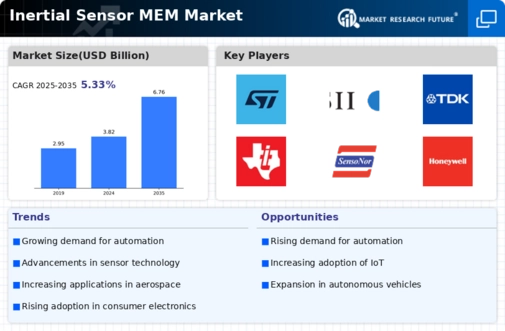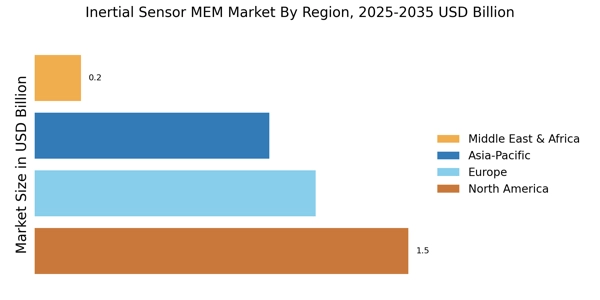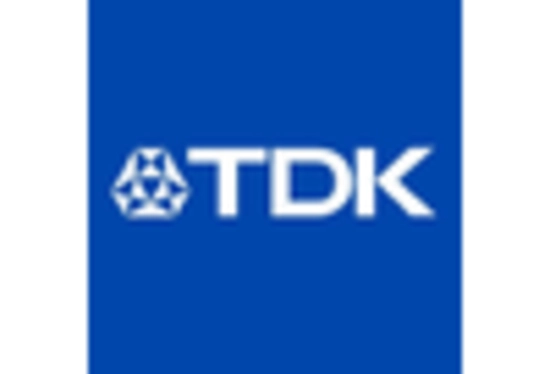Advancements in Consumer Electronics
The Inertial Sensor MEM Market is experiencing a surge in demand due to advancements in consumer electronics. As devices such as smartphones, tablets, and wearables increasingly incorporate inertial sensors for enhanced user experiences, the market is poised for growth. The integration of these sensors allows for improved motion tracking, navigation, and augmented reality applications. In 2025, the consumer electronics segment is projected to account for a substantial share of the market, driven by innovations in sensor technology that enhance device functionality. This trend indicates a shift towards more sophisticated devices that rely on precise motion sensing, thereby propelling the Inertial Sensor MEM Market forward.
Increased Focus on Wearable Technology
The Inertial Sensor MEM Market is witnessing increased focus on wearable technology, which is driving demand for advanced inertial sensors. Wearable devices, such as fitness trackers and smartwatches, rely heavily on motion sensing capabilities to provide users with accurate health and activity data. In 2025, the wearable technology segment is expected to contribute significantly to the market, as consumers seek devices that offer enhanced functionality and user experience. This trend indicates a growing market for inertial sensors, as manufacturers strive to integrate more sophisticated sensing technologies into their products. The Inertial Sensor MEM Market is thus likely to benefit from the ongoing innovations in wearable technology.
Rising Adoption in Robotics and Automation
The Inertial Sensor MEM Market is experiencing growth due to the rising adoption of robotics and automation across various sectors. Inertial sensors are integral to the functionality of robotic systems, providing essential data for motion control and navigation. As industries increasingly automate processes to enhance productivity, the demand for precise inertial sensors is expected to rise. In 2025, the robotics sector is projected to significantly impact the Inertial Sensor MEM Market, as advancements in sensor technology enable more sophisticated robotic applications. This trend suggests a promising future for the market, driven by the ongoing evolution of automation technologies.
Emergence of Smart Transportation Solutions
The Inertial Sensor MEM Market is benefiting from the emergence of smart transportation solutions. As cities adopt intelligent transportation systems to improve traffic management and safety, the demand for inertial sensors is likely to increase. These sensors play a crucial role in vehicle navigation, collision avoidance, and fleet management. In 2025, the transportation sector is anticipated to witness a significant uptick in the adoption of inertial sensors, driven by the need for enhanced safety and efficiency. This trend indicates a broader shift towards smart mobility solutions, positioning the Inertial Sensor MEM Market as a key player in the future of transportation.
Growth in Aerospace and Defense Applications
The Inertial Sensor MEM Market is significantly influenced by the growth in aerospace and defense applications. The demand for high-precision inertial sensors in navigation systems, missile guidance, and aircraft control systems is on the rise. In 2025, the aerospace sector is expected to contribute notably to the market, as governments and private entities invest in advanced technologies for enhanced operational capabilities. The increasing focus on autonomous systems and unmanned aerial vehicles further amplifies the need for reliable inertial sensors. This trend suggests that the Inertial Sensor MEM Market will continue to evolve, driven by the critical requirements of the aerospace and defense sectors.

















Leave a Comment